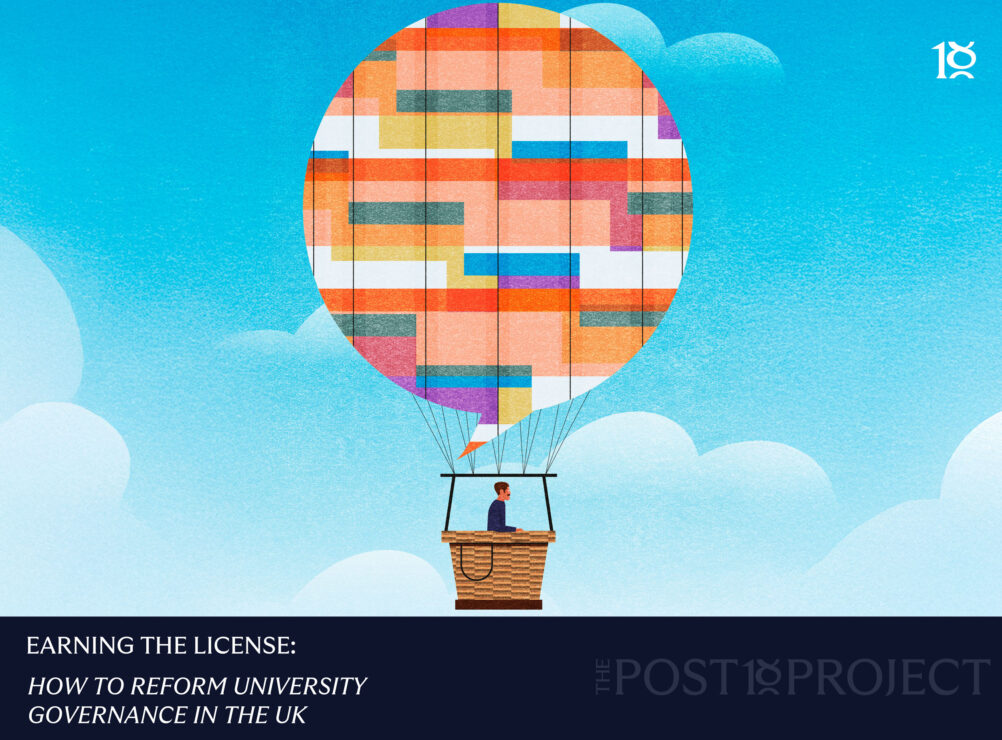We’d all expected university applications to be down this year.
We’re smack in the middle of a demographic trough, the UK had (before recent interventions) been steadily becoming a less welcoming place for international students, every week seemed to be bringing a story about how terrible university is. And then there was the small matter of a global pandemic.
So today’s data for UCAS applications before the main (30 June) application brings a welcome surprise – four out of ten 18 year olds have applied to study a higher education course. International applicants are up 10 per cent, and even EU students are down just 2 per cent.
Late registration?
We have to keep a realistic position on this – so is it possible that numbers will fall away before the start of term? Based on the available data, it appears not. There’s been a 10 per cent increase in applications between the most popular (15 January) deadline and 30 June. And compared year on year, we see an incredible 17 per cent increase in new applications between 23 March 2020 and the end of June. People have been planning for study next term during lock down.
Couple this with the news that more applicants have accepted a place for the autumn than last year, and that there has been fewer deferrals than last year, and we’re looking at a 2020 cycle that seems to be running contrary to our most pessimistic predictions. Indeed, the recent IFS projections were based on a 10 per cent decrease in 2020 starters – we’re currently up 1.6 per cent.
Nursing is a subject that has seen particular interests – numbers are up 15 per cent year on year – and the number of new nursing applications between January and June is up a spectacular 63 per cent on last year.
And there’s great news on widening access to HE – for the first time, more than a quarter of young people from disadvantaged backgrounds (POLAR) have applied to higher education.
As Clare Marchant of UCAS notes:
We’re seeing an encouraging picture emerge out of national lockdown, with currently more applicants than last year keen to expand their mind, stretch themselves, and seize the opportunities that higher education can offer.”
What does all this mean?
On the face of it this is hugely positive news. If you’ve spent lockdown making graphs about how much damage low recruitment will bring to UK universities, as I have, you could be excused for a sigh of relief. But don’t relax just yet.
Remember that though the visible news on international students is good, not all apply via UCAS, and – in particular – we don’t yet have an idea of the impact on postgraduate recruitment.
We’re also still working on the assumptions that applications and acceptances will result in fee paying students in the autumn – I fear that we can’t be as certain of that link as we are in other years.
Financially we know that international student recruitment more generally is a big chunk of income at provider level – we also have to factor in losses from commercial research, accommodation and catering, investment performance, and likely pensions adjustment. Certainly there are some providers that are supported primarily by UK recruitment, but we don’t have provider specific data and will not have this till January.
More uncertainty ahead
The big unknown in all this is self-release and clearing. It has recently become easier, and more common, for applicants to release themselves from existing firm acceptances, and new technological tools exist to help in identifying alternate courses. Couple this with all of the assumptions about applicant behavior baked into the student number cap and we are in for the busiest Clearing ever.
The accepted wisdom is that when applicants accept a place they are unlikely to move from it. The tendency is to start planning your life around that choice, checking out accommodation options, joining social media groups, and all the rest of it. With continued suspicion that the start of the new term will happen in the same bedroom as the end of the last one these ties will be less strong. A lot will depend on the quality of pre-enrollment communications.
And we already know, that for international students applying via UCAS in particular, high tariff providers are taking a larger slice of the pie than ever.
So this latest data from UCAS is very welcome. But we are not out of the woods yet.
One last thing
Covid-19 isn’t the only battle the sector has been fighting. The last year, in particular, has seen more negative press – and negative comment from the government – about higher education in England than ever before. From ideological monoculture to dumbing down and bums on seats, just about every possible insult has been heaped upon the work that staff and providers in HE do to offer skills and opportunities to as many young people as possible.
It’s fashionable in some academic circles to disparage the idea of “the market” as something antithetical to the work of higher level education. But, right now, that same market is making an eloquent argument against cutting or shrinking a sector that is more popular with those it serves than ever.














Given the initial predictions, this is a good place for the sector to be in, notwithstanding the potential for fall-off as enrolment date comes close. Perhaps the key factor for many applicants, as has been mooted before, is the even greater uncertainly of what to do for a year if they defer. It will be interesting to see, as a further indicator of intent, what the initial take-up of accommodation looks like over the coming weeks.
David, where do you get all this admissions data from?!